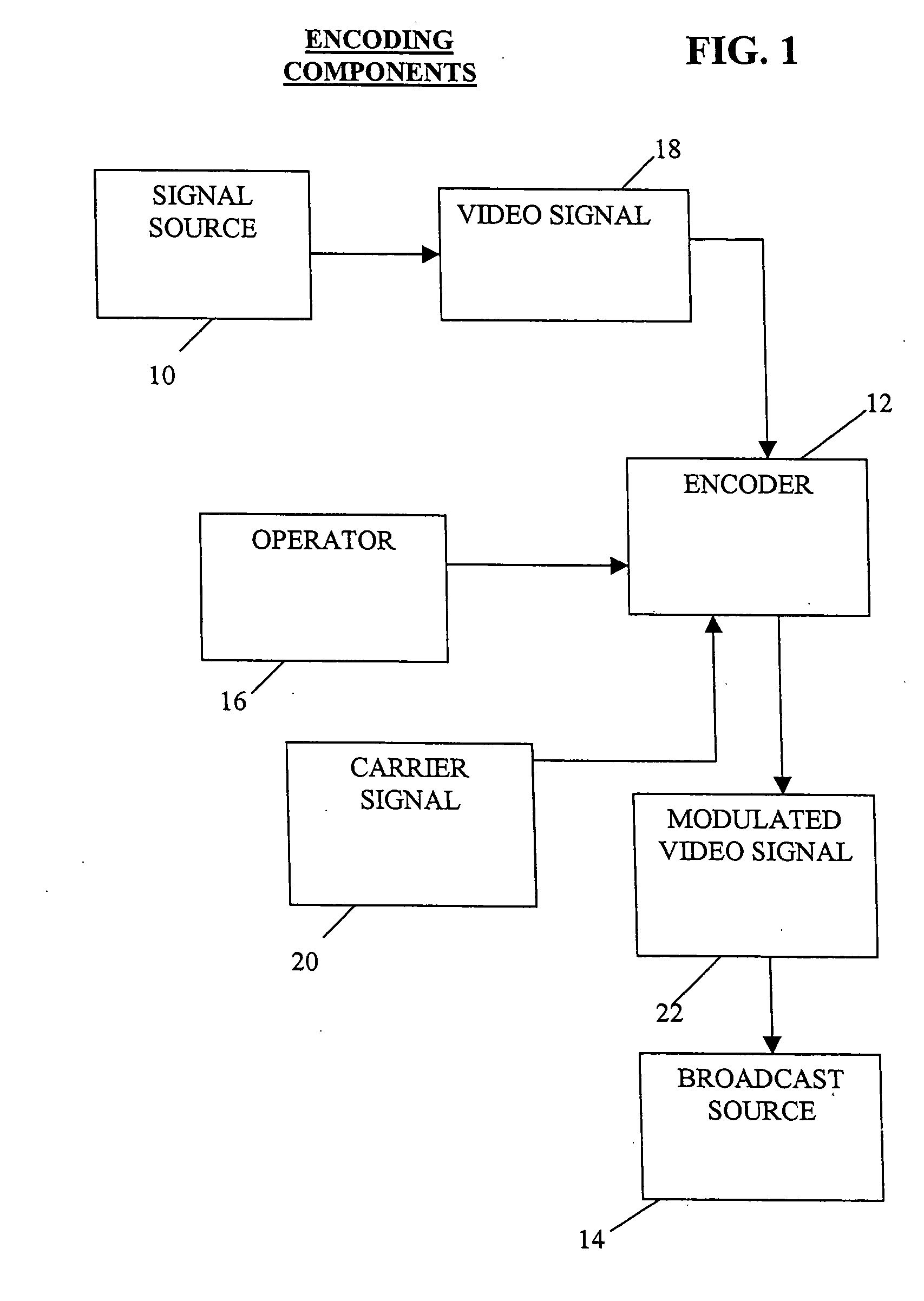Method and system for enhanced modulation of video signals
a video signal and enhanced modulation technology, applied in the field of enhanced modulation of video signals, can solve the problems of increasing the difficulty of an unauthorized party interfering with or intercepting the carrier signal, prone to being stripped, and using broughton and other methods of encoding carrier signals may not be robust enough, so as to increase the detectability of the carrier signal and increase the alteration of the video signal
- Summary
- Abstract
- Description
- Claims
- Application Information
AI Technical Summary
Benefits of technology
Problems solved by technology
Method used
Image
Examples
Embodiment Construction
[0055] Referring to the drawings, a method, apparatus and system for optimal modulation of a carrier signal within an active portion of a video signal in a manner that the carrier signal cannot be easily stripped and the detectability of the carrier signal is increased without noticeably increasing the alteration of the video signal to a viewer is illustrated in FIGS. 1-29.
[0056] Referring to FIG. 1, a video signal 18 is transmitted from a signal source 10 to an encoder 12. Video signal 18 is preferably an analog video signal in NTSC (National Television Standards Committee) format, but may be other video signals or video signal formats compatible with the present invention. Signal source 10 is typically a professional grade video tape player with a video tape containing a video program, but may also be other sources of video including a camcorder or a digital versatile disc (DVD) player with a DVD video containing a video program. Encoder 12 is described in greater detail below.
[...
PUM
 Login to View More
Login to View More Abstract
Description
Claims
Application Information
 Login to View More
Login to View More - R&D
- Intellectual Property
- Life Sciences
- Materials
- Tech Scout
- Unparalleled Data Quality
- Higher Quality Content
- 60% Fewer Hallucinations
Browse by: Latest US Patents, China's latest patents, Technical Efficacy Thesaurus, Application Domain, Technology Topic, Popular Technical Reports.
© 2025 PatSnap. All rights reserved.Legal|Privacy policy|Modern Slavery Act Transparency Statement|Sitemap|About US| Contact US: help@patsnap.com



